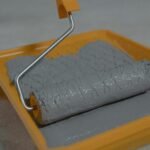When it comes to Acoustic ceiling tiles, they are generally seen as a “set it and forget it” component in commercial buildings, but this is anything but true. The fact of the matter is that they, too, have a lifespan like HVAC units or lighting systems, and therefore, it’s important to know how and when to replace or upgrade them to keep them up and running. By getting to understand how the acoustic ceiling tile lifespan works, you can avoid inefficient energies, hidden costs, and above all, occupant complaints.
In this guide, we’ll explore the factors underlying the longevity of acoustic ceiling tiles, how to identify signs of wear, and best practices for replacement and upgrades.
What Is the Typical Acoustic Ceiling Tile Lifespan?
Most standard acoustic ceiling tiles typically last for 10 to 25 years, but that depends on several factors, like the
- Material types like mineral fiber, fiberglass, or metal
- The extent of abuse from environmental factors like humidity, temperature fluctuations
- Indoor air quality
- Maintenance and handling
- Building use and occupancy levels
Tiles utilized in office spaces or low-traffic areas are found to display minimal issues and may last two decades or longer. However, wear and tear is more frequent in healthcare, education, or industrial environments, which makes regular evaluation a must.
Key Signs It’s Time to Replace Your Ceiling Tiles
Just recognizing when your ceiling tiles have reached the end of their useful life can spare you more serious operational issues. Here are the most common signs:
1. Visible Staining or Discoloration
Stains can appear due to various causes, like leaking roofs, plumbing issues, or HVAC condensation. All these points point to underlying moisture issues while giving an unprofessional look. Water damage makes getting new tiles the only viable option.
2. Sagging or Warped Panels
Drooping tiles or those with curls at the edges happen when they absorb excess moisture or when age gets the better of them. Sagging can disrupt thermal and acoustic performance.
3. Cracks, Breakage, or Crumbling
Mental fibre tiles are prone to cracking over time. An upgrade becomes necessary if you observe crumbling corners or cracked surfaces
4. Loss of Acoustic or Thermal Performance
If there has been a rise in noise complaints or if you encounter HVAC strain, it’s a clear signal that your old ceiling fans could be experiencing issues. This can either be blamed on a reduction in Noise Reduction Coefficient (NRC) or Ceiling Attenuation Class (CAC) ratings
5. Mold, Odor, or Mildew
Prolonged exposure to moisture can turn tiles into breeding grounds for mold or bacteria. This can pose a health risk while giving rise to indoor air quality concerns, so these must be removed immediately.
Smart Scheduling for Ceiling Tile Replacement
There’s no one-size-fits-all approach in choosing how often to replace, but a planned ceiling tile replacement schedule can help extend building life as well as reduce reactive maintenance costs.
Guidelines proposed by the Environment Type
| Environment | Recommended Replacement Cycle |
| Schools/Education | Every 10–15 years |
| Hospitals/Healthcare | Every 8–12 years |
| Office Buildings | Every 15–20 years |
| Manufacturing Spaces | Every 7–10 years |
| Retail Spaces | Every 10–15 years |
Get your tile assessed along with yearly maintenance inspections to detect degradation early on.
When to Upgrade Instead of Replace
A simple “like-for-like” replacement isn’t always sufficient. Instead, you can take advantage of an upgrade to modern materials if your ceiling tiles are approaching the end of their lifespan
You can opt for upgrading in the following scenarios:
- You look forward to a LEED, WELL, or other green building certifications
- Your goal is to improve energy efficiency through PCM-embedded tiles
- Growing complaints of poor acoustics or uneven temperatures
- Your tiles come without recycled content or low-VOC certification
Soundproofing is just one of the many benefits of Modern acoustic ceiling tiles. Beyond that, it can drive improvements in light reflectance, thermal regulation, and air quality compliance features. Upgrading is more than just fixing a problem at hand- it brings greater value, improves performance, and promotes long-term use.
Future-Proofing Your Building: A Holistic Ceiling Approach
If you intend a broader building retrofit or new construction, consider integrating these elements in your ceiling tile upgrades.
- CM ceiling tiles for natural climate control.
- High-reflectance finishes for enhanced natural light and energy efficiency.
- Smart, drop-in sensors for real-time occupancy, air quality, and temperature monitoring.
Together, these elements contribute to commercial energy efficiency and support predictive maintenance strategies.
Beyond the Years: The True Value of Lifespan
On the surface, ceiling tiles may seem to be self-regulating architectural features, but they play a major role in building performance. Aged or worn-out tiles can lead to the following ;
- Loss in acoustic performance, which amplifies noise and lowers occupant comfort
- Accumulation of dust, mold, or mildew that compromises indoor air quality
- Affects the ability to regulate heat and light reflection potential, which reduces HVAC efficiency
- Visual undermining of aesthetics and perceived building value
That’s why a proactive approach to setting up a ceiling replacement schedule works best in supporting commercial energy efficiency to keep the integrity of your infrastructure intact while keeping your occupants happy.
How to Extend Ceiling Tile Lifespan: Maintenance Tips
Adopting a thoughtful maintenance program can extend the upper limit of tiles’ life expectancy.
- Regularly dust the ceiling to prevent the buildup of allergens or particulates.
- Use a soft cloth and mild detergent to clean small stains.
- Fix any leaks or HVAC issues right away to check for moisture damage.
- Keep physical contact to a minimum to prevent warping or damaged edges.
- Install tiles that come with a high rating for high-humidity or high-traffic areas where necessary.
Conclusion
The acoustic ceiling tile lifespan isn’t just a deadline—it says a lot about its long-term performance. Ceiling tiles are as crucial a part of your building’s thermal, acoustic, and aesthetic system as HVAC, lighting, or insulation, and thus warrant the same attention. Putting in place a clear ceiling tile replacement schedule and working towards energy-efficient upgrades, you can maximize occupant comfort, minimize costs, and set your facility up for a sustainable future.
Next time you’re in a room, glance up and reflect on your ceiling’s function… and if it’s due for a change.
Looking for the ideal ceiling tiles for your space? A professional energy audit is a good way to start, or you can go for a ceiling assessment to guide your next upgrade.
Understanding what’s overhead is the first step to a smarter ceiling strategy.






